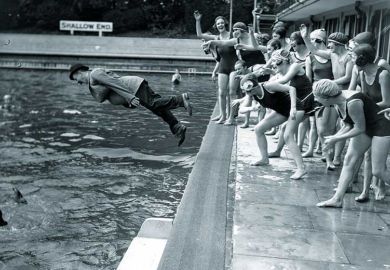Most leaders of the world’s highest ranked universities have been in the job for less than five years, with more than a fifth having been at the helm only since last year, a Times Higher Education analysis has revealed.
In a number of countries including the UK, the current vice-chancellor or president has been in post for an average of only four years, as the recruitment market reflects constant churn in higher education leadership.
The figures showing the relative precariousness of such roles have emerged after THE gathered data on the backgrounds and employment history of those leading universities in the top 400 of the World University Rankings.
It confirms that most are male, aged 60 or over, and have a science rather than arts and humanities background.
But the data on the high rate of leader turnover could prompt fresh concerns including that some systems have become too fixated on short-term goals instead of longer-term sustainability.
According to the analysis, the average leader across top 400 universities has been in the role for about five years. More than half – 203 – had been appointed since 2015, while only 40 had been in the role for longer than a decade.
Elite universities in the US tend to hold on to presidents for longer than many other major systems, except Germany where rectors are elected by academic bodies for fixed terms.
Presidents in the US have been in the role for an average of 6.7 years, much longer than Australia (4.1 years) and the UK (4 years) and more than twice as long as some other European countries like France (2.9 years) and Italy (3.4).
Timothy Devinney, professor and chair of international business at the Alliance Manchester Business School, said that although the tenure of chief executives in companies had also shortened “significantly” in recent years, there was an issue in some higher education systems where “few senior university managers stay in one location very long”.
“The way to go up in the game is to keep moving. Getting stuck in a position is the kiss of death for advancement,” he said.
“What you tend to see is people taking jobs…starting a load of ‘initiatives’ and then quickly using that to move on to something new. For many it is the getting of the job that matters, not the actual doing of the job or completing what they started.” He said that the system in the UK was “geared to breed mercenaries” as opposed to the US, where there was more emphasis on “loyalty” to an institution.
Elsewhere, the leadership data show a lack of demographic diversity among vice-chancellors and presidents worldwide.
Dawn Freshwater, vice-chancellor of the University of Western Australia, said that there needed to be a major rethink about the way that leaders were recruited if universities wanted to remain relevant in the modern world.
“Diversity of university leadership is critical to our survival as genuinely independent bodies. We are no longer in a world where it can be safely assumed that white gentleman scholars are the right sort of people to do the work required. That was always a lazy, arrogant assumption. Now, it’s dangerous,” she said.
“Intelligence and leadership abilities come from everywhere. They come from women as well as men, despite centuries of university advice to the contrary. They come from people who are not white; from people who did not go to Eton or Harrow or any of their equivalents. And they come from artists, astronauts, economists, engineers, mathematicians, musicians, neurosurgeons and – dare I say it – nurses,” Professor Freshwater, who originally trained as a nurse, added.
Professor Devinney said that questions should also be raised about whether leaders were getting the right management training, despite expertise often being on their doorstep in terms of a business school.
“The problem is that because so many university leaders are untrained in business and management, they learn what they learn ‘on the street’ rather than in any formal manner,” he said.
“Some universities have internal management training but this is generally quite superficial and low level and is normally completely independent of the business schools and not up to the standards that one expects of senior executive training.
"So business school academics find that our universities expect us to train the managers of the future or do significant executive programmes, yet they rarely if ever use us to help them learn new things or guide them through processes and decisions.”
Find out more about THE DataPoints
THE DataPoints is designed with the forward-looking and growth-minded institution in view
Register to continue
Why register?
- Registration is free and only takes a moment
- Once registered, you can read 3 articles a month
- Sign up for our newsletter
Subscribe
Or subscribe for unlimited access to:
- Unlimited access to news, views, insights & reviews
- Digital editions
- Digital access to THE’s university and college rankings analysis
Already registered or a current subscriber? Login








